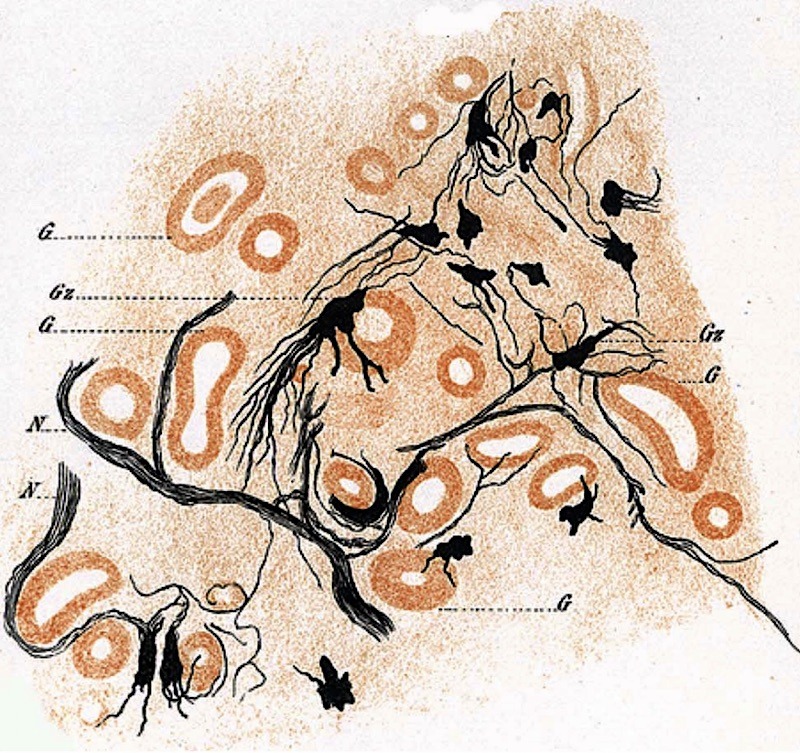Elisabeth H. Winterhalter
Elisabeth Hermine Winterhalter (1856 – 1952) was a German gynecologist and surgeon.
Pioneer physician; neuroanatomy researcher; leader of the feminist movement; and one of the first female surgeons in Germany.
Heavily involved in the women’s education as part of the Frauenbewegung (women’s movement) in Frankfurt, Winterhalter founded a Frauenpoliklinik (women’s polyclinic) in 1891. As Chairwoman of the local Association for Women’s Education – Women’s Studies she campaigned for the foundation of a girls’ high school in Frankfurt which opened in 1901.
Biography
- Born 17 December 1856 in Munich, Germany
- 1867 – Convent school in Beuerberg bei Wolfratshausen
- 1872-1874 – Primary school teacher training at the Bayerisches Lehrerinnenseminar followed by assistant teacher in Schwabing, Munich
- 1884-1889 – At the age of 28 she commenced Medical studies in University of Zürich and University of Bern. She met her partner, the painter Ottilie Roederstein whilst studying for her doctorate
- 1890 – Denied the opportunity to take the board exam to practice medicine in Germany because she was a woman. Far from discouraged by this, she moved to Frankfurt (1891) working as an unlicensed assistant to two male colleagues sympathetic to her plight. She underwent clinical training in gynecology at the Paris Charité with Prof Budin; and Munich with Prof. Ziegenspeck (1890-1903)
- 1891 – Founded the Frauenpoliklinik (women’s polyclinic) in Frankfurt.
- 1891-1911 Niedergelassene Ärztin in Frankfurt am Main.
- 1892 – Work as an unlicensed physician (Kurpfuscherin) was sparse. Winterhalter filled her spare time with neuroanatomy research at the Senckenberg Institute working with Carl Weigert (1845-1904)
- 1895 – First doctor in Germany to perform a laparatomy
- 1896 – With Ludwig Edinger she conducted research at the Senckenberg Institute, for which she published an article in 1896
- 1901 – She became a member of the Association for Women’s Education and Women’s Studies, which in 1901, based on the model of Helene Langes, founded the first secondary school for girls. These courses were later attached to today’s Schillerschule.
- 1903 – Organizing Committee for the 1st Congress for the German Society for Combating STDs
- 1904 – Without a license to practice medicine in Germany, Winterhalter at the age of 47 and 13 years after she started to practice medicine in Frankfurt, was allowed to sit for and passed the Physikum and Staatsexamen – the state exam in Germany
- 1911 – Retired from medical practice
- 1927 – Moved to Hofheim am Taunus with her partner, the painter Ottilie Roederstein
- 1929 – Both her and Ottilie Roederstein were awarded Ehrenbürgerschaf (Honorary Citizenship) nach Hofheim am Taunus
- Died 12 February 1952 in Hofheim am Taunus
Medical Eponyms
Winterhalter ganglia (1896)
Winterhalter’s research confirmed the presence of a perivascular nerve net in her sections of Golgi-impregnated human ovaries with loose collections of neuronal cell bodies associated with the ovarian vasculature and interstitial spaces near the ovarian hilum [aka * the nervous influence theory of Winterhalter]
Solch einen gangliösen Apparat finden wir im Eierstock zwischen Follikel-Schicht und den Gefässen der Markschicht eingeschoben, und es regt dessen Nachweis an, eine Vermuthung über den causalen Zusammenhang von Follikelreifung und Ovulation und Menstruation auszusprechen.
The presence of ovarian ganglia associated with the vessels of the follicular layer suggests a role for these cells in follicular maturation, ovulation and menstruation.

N Nervenstränge. G Gefasse. Gz Ganglienzellen.
Perivascular Golgi-impregnated neurons in the inner zona vasculosa
Professor Otto von Herff (1856-1916) agreed that the cells observed by Winterhalter resembled neurons, but cast doubt that the ovary contained autonomic ganglia. This led to a general dismissal of Winterhalter’s findings and assumptions.
Since then, researchers using modern methods of immunohistochemistry to identify neurons agree with Winterhalter (Dees et al., 1995; Anesetti et al., 2001; reviewed in D’Albora et al., 2002), and we now know that the proper innervation of mammalian gonads is important for their normal development and function. For example, vagotomy is known to alter the oestrus cycle, to reduce the secretion of steroids, to delay the onset of puberty, and to reduce the number of shed oocytes (reviewed in Gerendai et al., 2005).
Modern micrographs of Golgi staining and histochemical preparations of mammalian ovaries using neuron -specific markers are remarkably similar to the drawings published more than a century earlier by Winterhalter.
Other eponyms:
- Elisabeth-Winterhalter-Straßein Frankfurt’s Niederursel district is named after the her.
Major Publications
- Winterhalter EH. Zur Entstehung der Scheidenharnfisteln mit besonderer Berücksichtigung der durch Geburtstrauma bedingten Fälle, Dissertationsschrift, Zürich 1890.
- Winterhalter EH. Ein sympathisches Ganglion im menschlichen Ovarium. [A sympathetic ganglion in the human ovary along with comments on the teaching of the formation of ovulation and menstruation] Archiv für Gynäkologie 1896; 51: 49–56. [Winterhalter ganglion]
Controversies
Eponyms often reflect the gender and cultural biases of an earlier age. Winterhalter (despite her name being reproduced in full) was not alone in being referred to as ‘he’ in the major medical publications of the day. For example, from the St. Louis Medical Review 1896
References
- A sympathetic ganglion in the human ovary. In: Notes and Items. The St. Louis Medical Review 1896; 33: 380.
- von Herff O. Giebt es ein sympathisches Ganglion im menschlichen Ovarium? Archiv für Gynäkologie 1896; 51: 374-388.
- Kern E. Elisabeth H. Winterhalter. In: Führende Frauen Europas. 1930: 30-36
- Klausmann C. Politik und Kultur der Frauenbewegung im Kaiserreich: das Beispiel Frankfurt am Main. 1997
- Rök B. Ottilie W. Roederstein (1859-1937). An artist between tradition and modernity. Marburg 1999.
- Tucker RP. Elisabeth H. Winterhalter (1856-1952): the pioneer and her eponymous ovarian ganglion. J Hist Neurosci. 2013; 22(2): 191-197
- Elisabeth Winterhalter. Ärztinnen im Kaiserreich
- Walther B. Die Ärztin, der die Frauenbewegung vertraute: Dr. med. Elisabeth Winterhalter (1856-1952)
- Winterhalter (Frl.) Elisabeth (H.). Matrikeledition. University of Zürich
- Buttner R, Lee J. De-eponymising anatomical terminology. 2020
Graduated from Southampton Medical School in 2017 with BMBS. Working in Sir Charles Gairdner Hospital Emergency Department in Perth, Australia.



